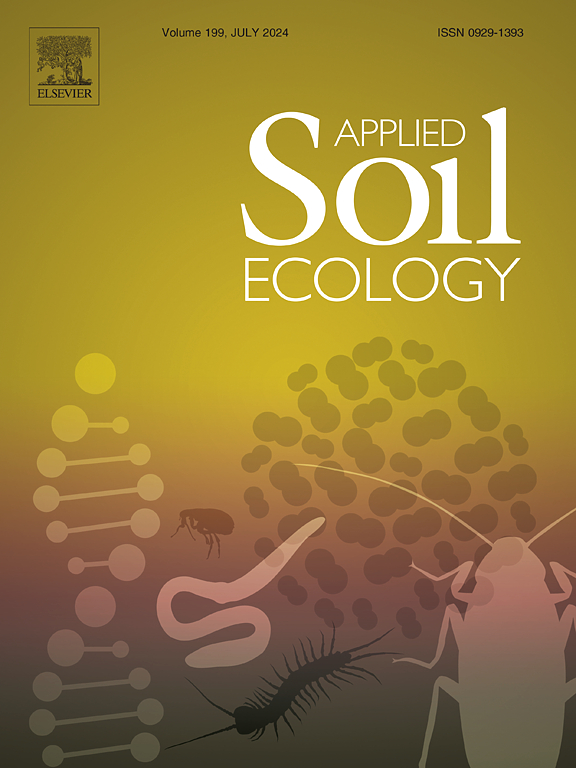Unraveling mechanisms of N₂O emissions and nitrogen cycling: The role of biochar C:N ratios in loamy and sandy soils
IF 4.8
2区 农林科学
Q1 SOIL SCIENCE
引用次数: 0
Abstract
The influence of biochar on N cycle is well-known, but specific biological and chemical mechanisms under biochar with different C:N ratios and soil types, remain inadequately unclear. This study aimed to explore the changes in N cycle after adding N-enriched biochar (NB) with varying C:N ratios to loamy and sandy soils. Experiment included nine treatments: three NB treatments (NB1, NB2, and NB3) and a pristine biochar (PB), applied at 20 t ha−1 (L1) and 40 t ha−1 (L2), along with a control (CK). NB significantly increased N fractions, nitrification, ammonification, mineralization, and soil enzymatic activities in loamy soil than in sandy soil. NH₄+-N and NO₃−-N were maximum in NB treatments during first 15 days, while NO₃−-N levels were higher in CK at later stages. NB effectively increased soil TN, SOM, AK, and AP compared to PB and CK in both soil types. In loamy soil, NB increased cumulative N₂O emissions by 157.3 % to 229.5 %, while PB reduced emissions by 14.7 % at L2. In sandy soil, PB and NB significantly reduced cumulative N₂O emissions, with the greatest decrease (39.2 % to 86.1 %) at L2. Structural analysis showed that N fractions significantly influence N transformation in loamy soil, whereas soil properties and N fractions affect N pathways in sandy soil. We thus demonstrate biochar's C:N ratio and soil type are crucial in influencing N transformations and N₂O emissions. These findings are crucial for developing targeted biochar application strategies to enhance soil fertility and reduce greenhouse gas impacts with potential applications across global agroecosystems.
求助全文
约1分钟内获得全文
求助全文
来源期刊

Applied Soil Ecology
农林科学-土壤科学
CiteScore
9.70
自引率
4.20%
发文量
363
审稿时长
5.3 months
期刊介绍:
Applied Soil Ecology addresses the role of soil organisms and their interactions in relation to: sustainability and productivity, nutrient cycling and other soil processes, the maintenance of soil functions, the impact of human activities on soil ecosystems and bio(techno)logical control of soil-inhabiting pests, diseases and weeds.
 求助内容:
求助内容: 应助结果提醒方式:
应助结果提醒方式:


